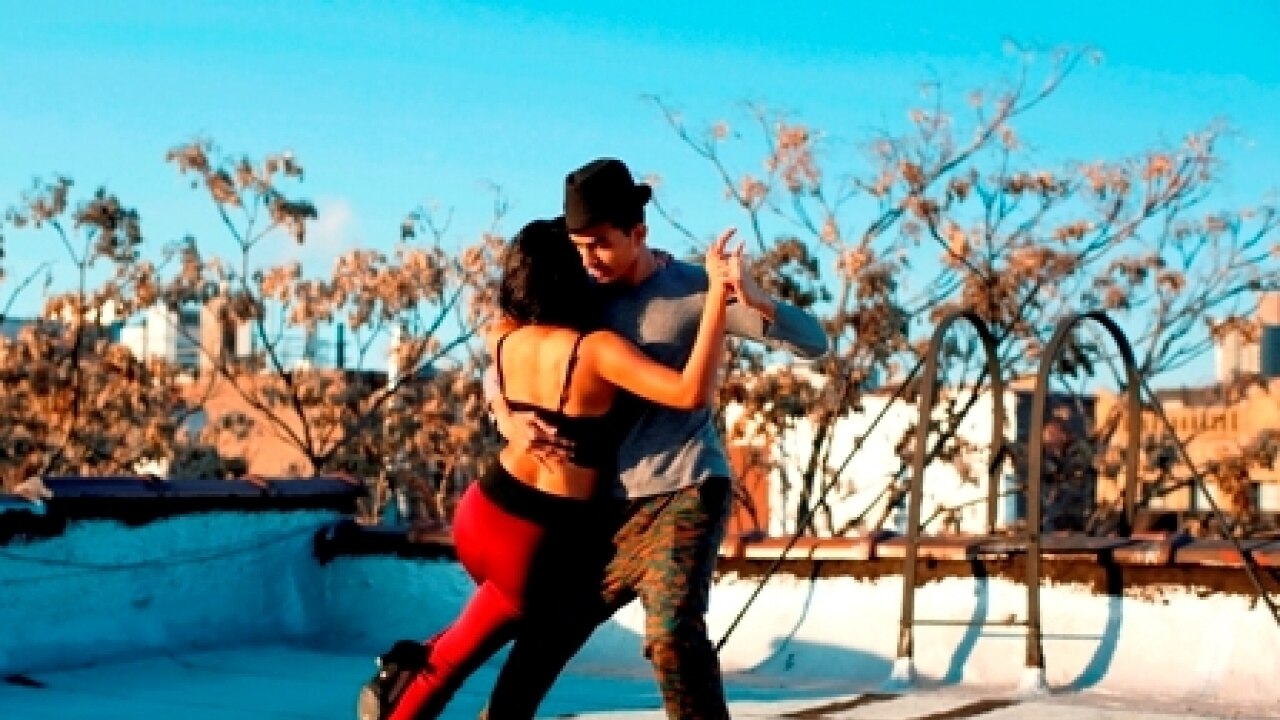
Head to the House Of Wow in Bandra during evenings at the end of the week, and you’d not be able to resist swaying to the pulsating yet soothing music that’s played there. A curious you may want to step inside and watch the happenings at this place; a studio set-up that bridges the gap between contemporary and Parisian, switching between stark-hued walls and floral upholstery.
Walk right into this cultural space and you’ll find novices gauging their steps as they try to follow dance partners Namrata Wittke and Elvis Mascarenhas. Elvis and Namrata, unlike the beginners, seem like one unit while dancing; following the man’s lead, Namrata is engrossed in matching up to him, to music that sounds like a mix of French Caribbean Zouk. While the dance form is slow and looks highly passionate, an article we read mentioned 'if zouk is the party, Kizomba is what’s going on in the back bedroom'. Personally, I think Kizomba is not 'uncomfortably' sensual, unlike Bachata (which is a more intimate dance form). Kizomba—introduced to Mumbai by Elvis and Namrata of Rare Grooves Dance Company—is mesmerising to watch, and a perfect dance option for couples who want to work on their connection.
What’s the buzz?
Ask Namrata about how this dance form originated and she shares with us the interesting history of Kizomba. Originated in Angola, Kizomba stems from a dance form called Semba. The music used in Kizomba is a mix of French Caribbean Zouk music and Semba music (which is a mix of the congo and the guitar). Namrata explains, “French Carribean Zouk music is slow unlike the Semba music, that’s why Kizomba is slower than any form, but it retains the African flavour. Technically, the moves are almost the same.” Namrata also mentions that the form was popularised in the late 60s and 70s, post a political upheaval in Angola because of which young artists had to shift to Portugal. Kizomba was then used for recreation, but slowly gained relevance because of its unique style and form.
Literally meaning ‘party’ in the Kimbundu language (spoken in Angola), Kizomba has found a fan following in the US and Europe, especially Paris where they have Kizomba parties at almost every nook and corner. There are also a number of Kizomba fests that take place around the world (there was one in Miami recently), which proves that this dance form is now slowly being accepted by dancers across the world.
Taking that lead
We headed to watch the third session of the Kizomba class conducted by Namrata and Elvis. Involving a group of eight enthusiastic students from a varied age group, it was exciting to watch them eager to be a part of the first batch of Kizomba learners. While one might expect that people would have a problem dancing up close and personal with a stranger; on the contrary, the class was very comfortable changing their partners for the session. Namrata mentioned, "Despite it being a close dance, we ensure that the dancers change partners. If you dance with only one person, you end up getting used to that person’s lead; and then it gets difficult to follow someone else’s lead."
The most important part of Kizomba is the thigh-to-thigh connection between both partners; also a way to lead the woman in the dance. There's a lot of stress on both footwork and posture; the woman tilts slightly towards her partner, placing her left hand on his nape and clutching his left thumb with her right hand. The best part about this dance form is, undoubtedly, the music. Namrata says, "Both Elvis and I were inclined to learning this form after listening to the music, which is so lyrical and amazing." We can't deny that.
Asha Gopal, a media professional who accompanied us to witness the session said, "There's sensual dancing, and then there's Kizomba. The dance is a treat to the eyes and truly mesmerising. But personally, I will not be too comfortable learning the same with strangers as partners as it's too personal a space to allow someone so close. But the music of Kizomba is absolutely brilliant and the only reason I might still consider learning it would be because of the music and because the steps are easy to follow unlike a lot of other dance styles."
We'd agree. It surely isn't a difficult dance form to grasp. Elvis affirms, "It takes about four to five months to be able to perform Kizomba on the dance floor."
So if you're scouting for something new, we'd say you try Kizomba; get your partner to spend some 'we-time' with you on the floor, or just make new friends while learning this unique dance form.
Tried & Tested
It is a relaxed, fluid dance form and is both sensuous and expressive. The music is extremely lyrical. I've learnt several ballroom dances for years now, but I think Kizomba is a form that bridges the space between a hectic dance form and a romantic one. I'd say it's an extremely mature form of dancing and I thoroughly enjoy the classes.
- Anuradha Ansari, Peddar Road resident
I have been dancing for more than five years now. I have learnt contemporary dance forms and even Salsa, and I wanted to try something new. So I decided to try Kizomba, which is extremely different from what I've tried before. I'm thoroughly enjoying the classes.
- Vichitra Bhandari, Khar resident